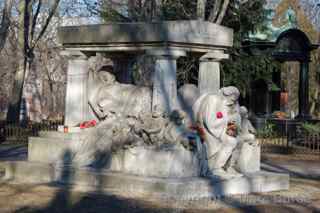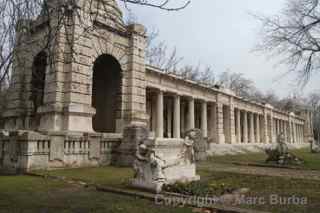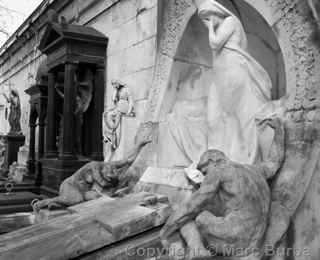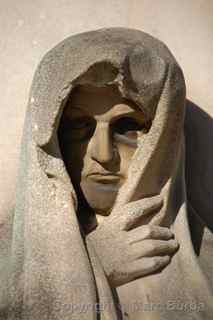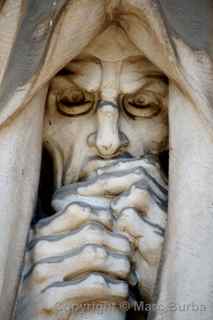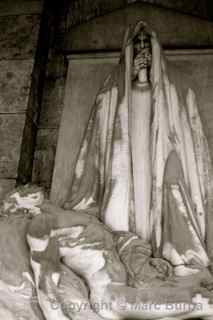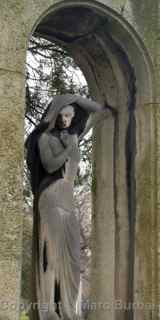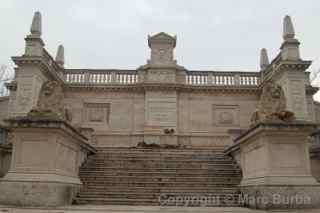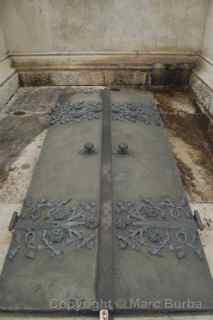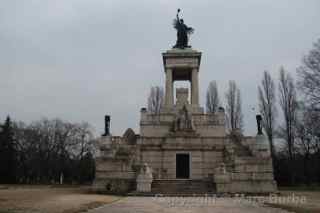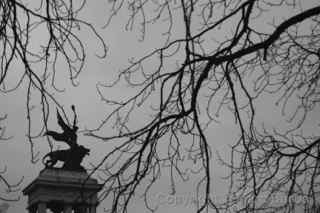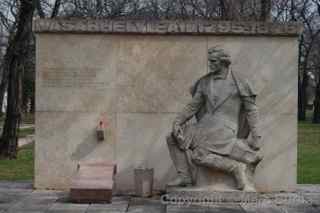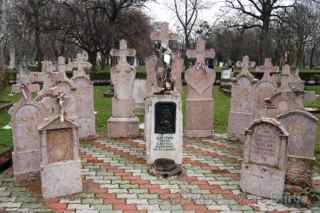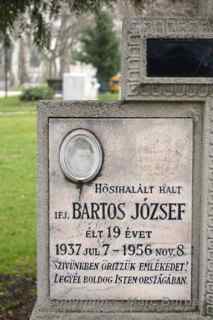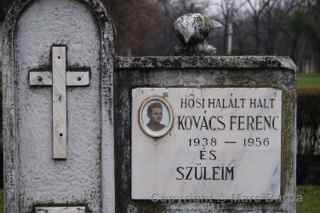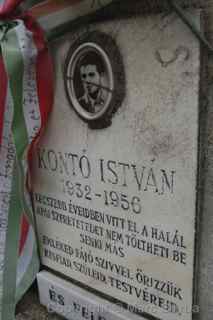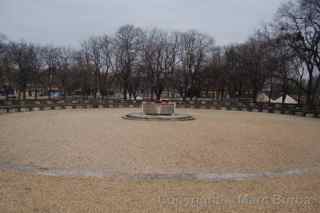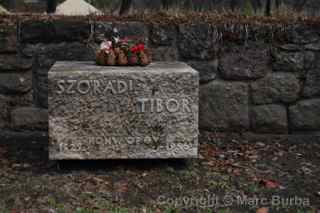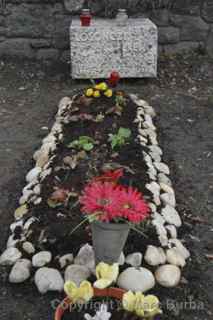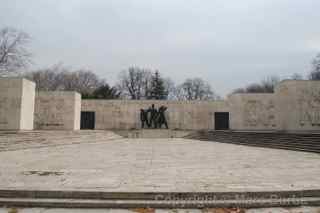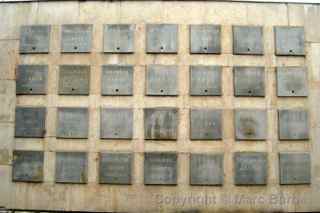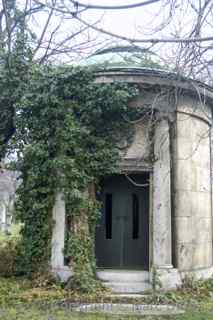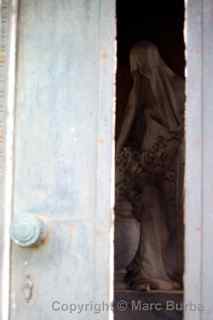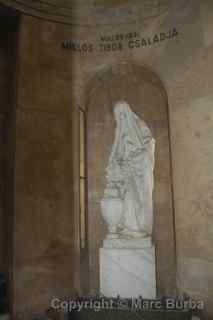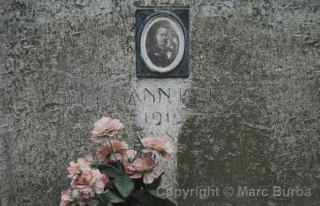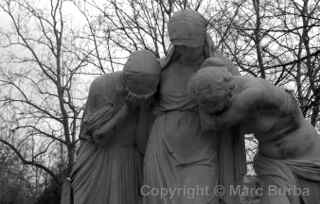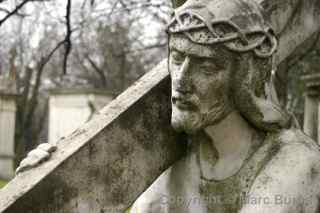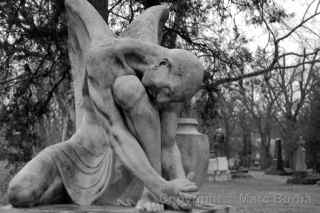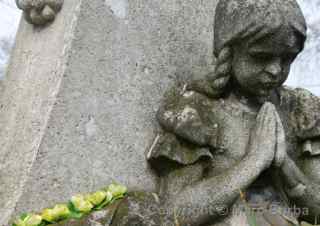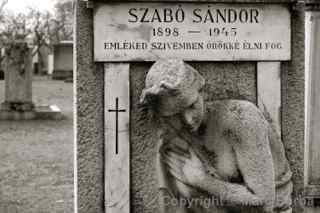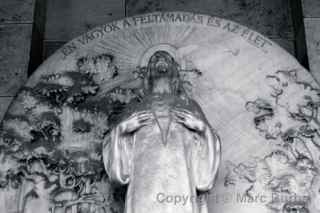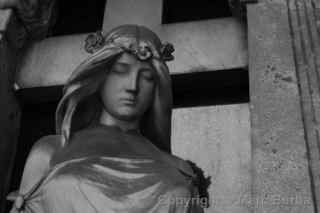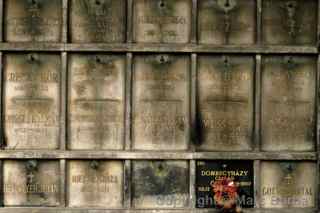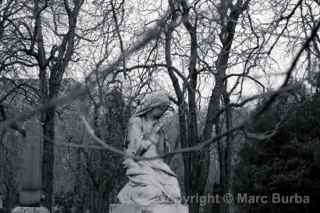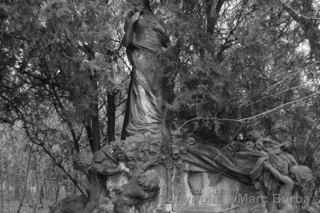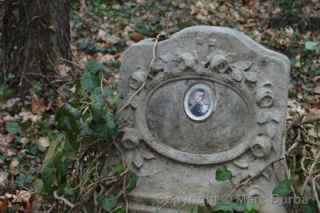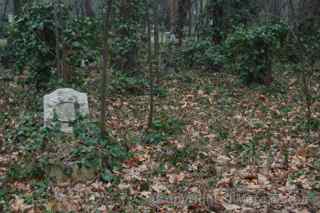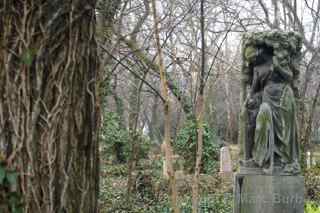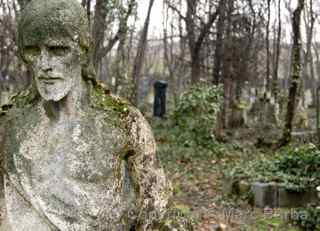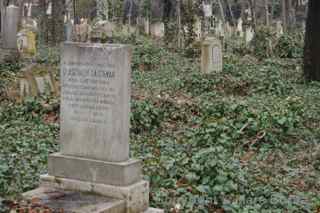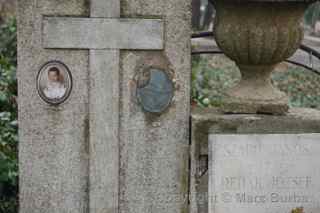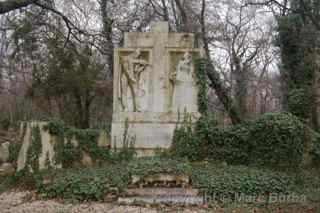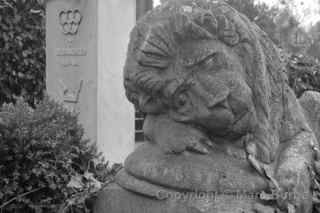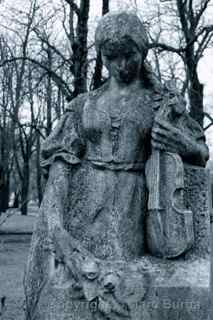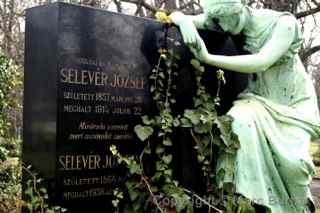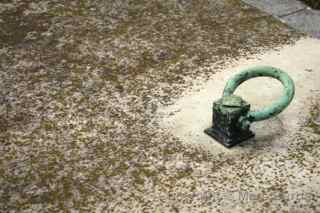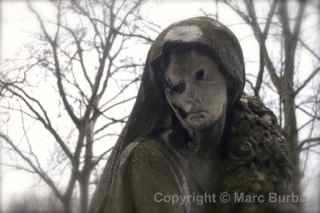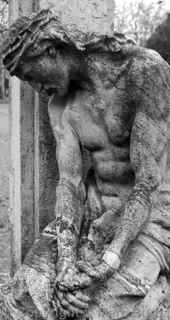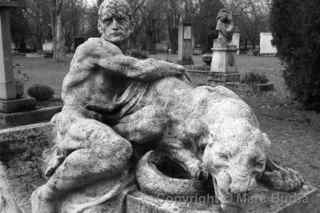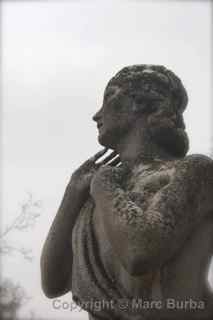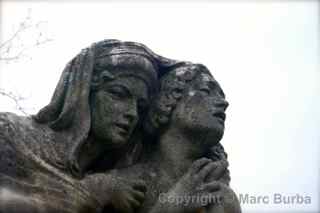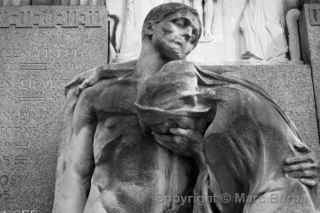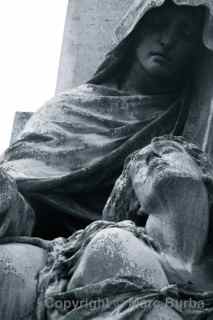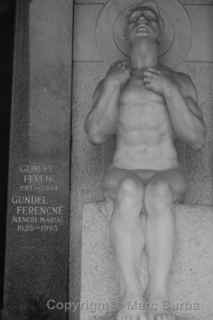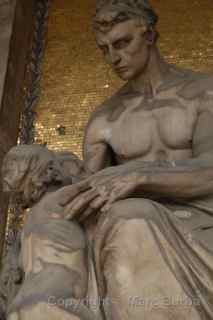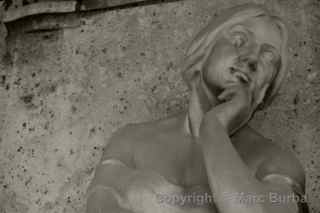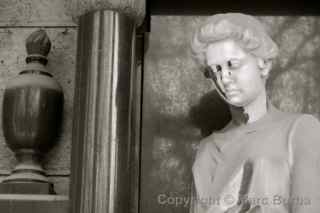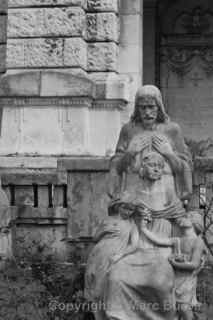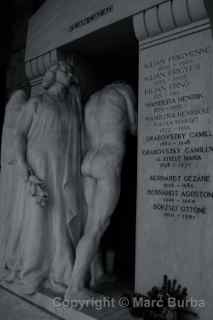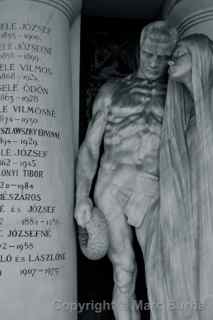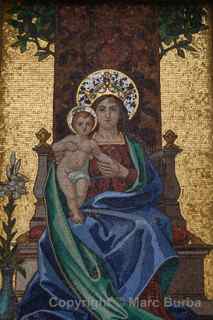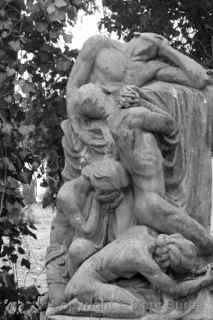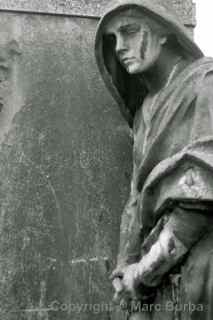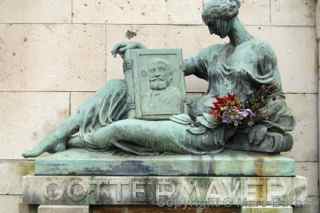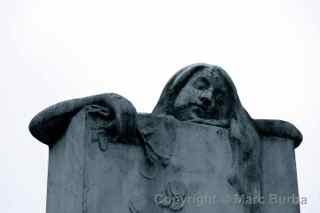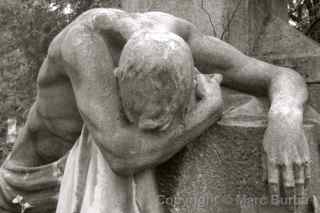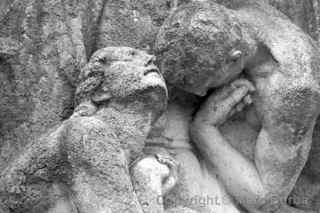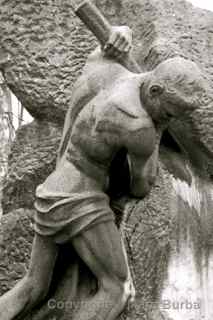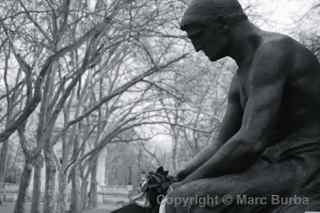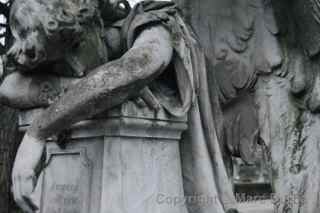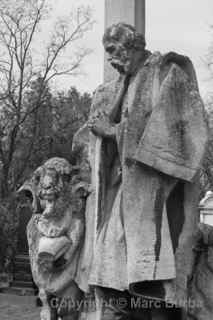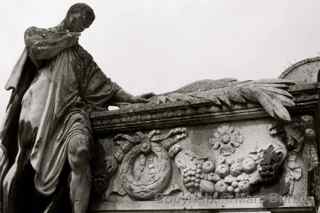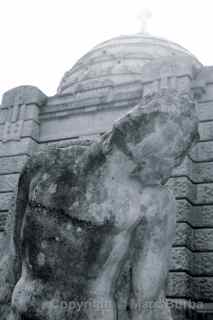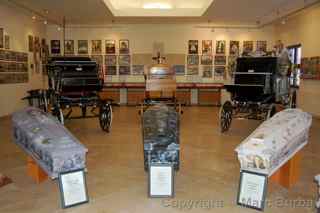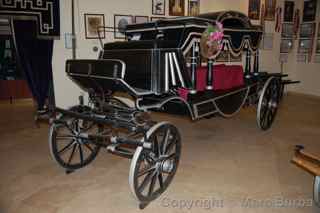Kerepesi Cemetery, Budapest
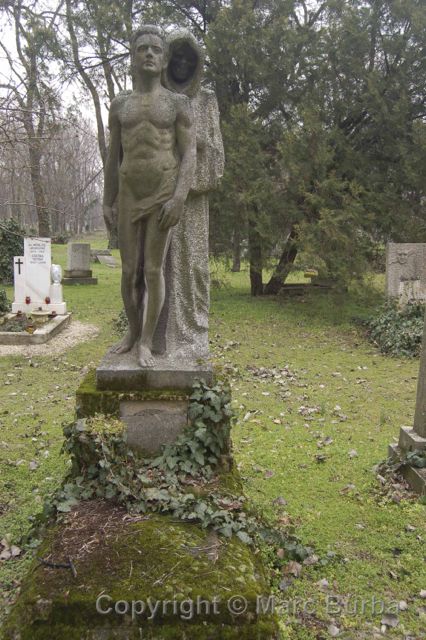 The handsome teenager is stoically looking into the distance, left foot out, as if ready to begin a journey. He is nude except for one discreet draping. Behind him, a cloaked figure stands ready to guide him, a bony hand on his right shoulder. The figure’s hood keeps the face deep in shadow. Only close up can I see it’s not a face at all, but a skull. It is death, here to take the boy.
The handsome teenager is stoically looking into the distance, left foot out, as if ready to begin a journey. He is nude except for one discreet draping. Behind him, a cloaked figure stands ready to guide him, a bony hand on his right shoulder. The figure’s hood keeps the face deep in shadow. Only close up can I see it’s not a face at all, but a skull. It is death, here to take the boy.
The statue, in a back section of Budapest’s historic Kerepesi Cemetery, made me shudder when I first saw it on this cool, overcast morning. It is full-size and lifelike, and like so many statues throughout this cemetery, it depicts the inevitability of death.
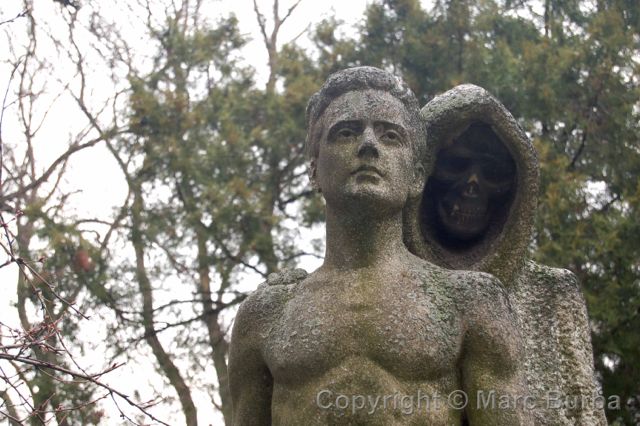 This young man’s identity sadly is being lost to time. The stone marker at the statue’s base has detached and fallen a few inches onto the grave slab, fracturing the top right corner. Decades of weather have eroded his name and the dates of his birth and death, making them all but unreadable. Moss covers the slab and is creeping higher. Vines have begun to wrap around it.
This young man’s identity sadly is being lost to time. The stone marker at the statue’s base has detached and fallen a few inches onto the grave slab, fracturing the top right corner. Decades of weather have eroded his name and the dates of his birth and death, making them all but unreadable. Moss covers the slab and is creeping higher. Vines have begun to wrap around it.
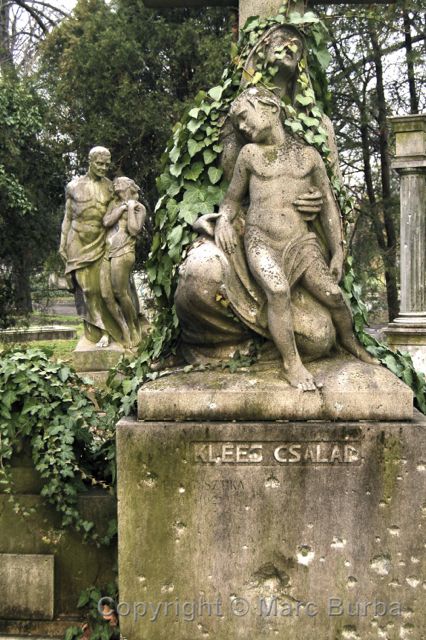 The statues and monuments and mausoleums in this 140-acre, open-air museum tell stories about life and death, pain and sadness, hope and rebirth. The cemetery is officially named the Fiume Road National Graveyard and is one of Europe’s largest national pantheons. It was founded in 1847, and is a chronicle of Hungary’s history of war and revolution. A battle was actually fought on these grounds.
The statues and monuments and mausoleums in this 140-acre, open-air museum tell stories about life and death, pain and sadness, hope and rebirth. The cemetery is officially named the Fiume Road National Graveyard and is one of Europe’s largest national pantheons. It was founded in 1847, and is a chronicle of Hungary’s history of war and revolution. A battle was actually fought on these grounds.
While much of the cemetery is carefully maintained, a few parcels in the back have become overgrown. Nature is taking over again, turning headstones into green mounds of ivy and strangling statues with vines. Taller markers poke out above the growth in triumph, as though have won a fight against a predator. There are literally hidden treasures amid the trees and vines.
Among its most striking features are the century-old arcades — walls of stunning statues and tombs that only wealthy families could afford. The arcades are prominent along the cemetery’s main avenue. Tombs of other notable people cluster around it. Presidents, prime ministers, politicians, actors, artists, and scientists all are buried or entombed here.
Toward the end of World War II, bombs damaged or destroyed a number of tombs during the siege of Budapest. The Soviet army occupied the cemetery in January 1945, setting up camp and fighting Nazi forces here. Many graves still bear the scars of those battles.
The end of the war did not end the country’s suffering. After another decade of oppression under the Soviets’ Communist regime, revolutionaries rose up against the government. What began as a student demonstration in front of Budapest’s Parliament building in 1956 turned into a national uprising that lasted 17 days until Soviet forces quashed it. More than 2,500 Hungarians were killed in the fighting. Many of those revolutionaries are buried here, in two sections that stand as monuments to the uprising. One is within sight of a huge and hugely controversial Communist monument that was built in the late 1950s. Hungary remained under Communist control until 1989.
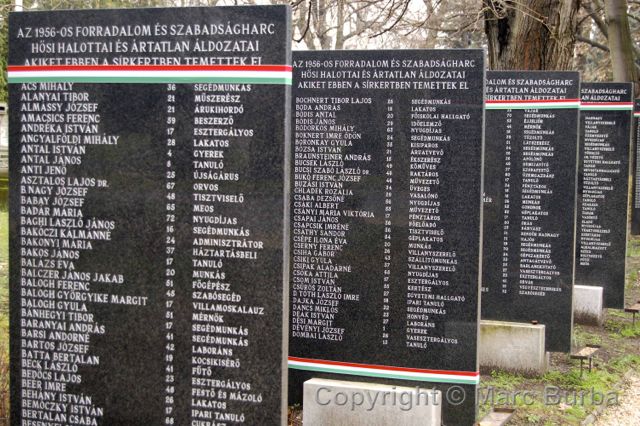 A line of black granite markers list the names of “heroes and innocent victims of the 1956 Revolution” buried here and throughout Hungary.
A line of black granite markers list the names of “heroes and innocent victims of the 1956 Revolution” buried here and throughout Hungary.
I spent several hours here on this day, completely losing track of time. I think I still did not see at least half of the cemetery. I’m sure I’ll return again.

